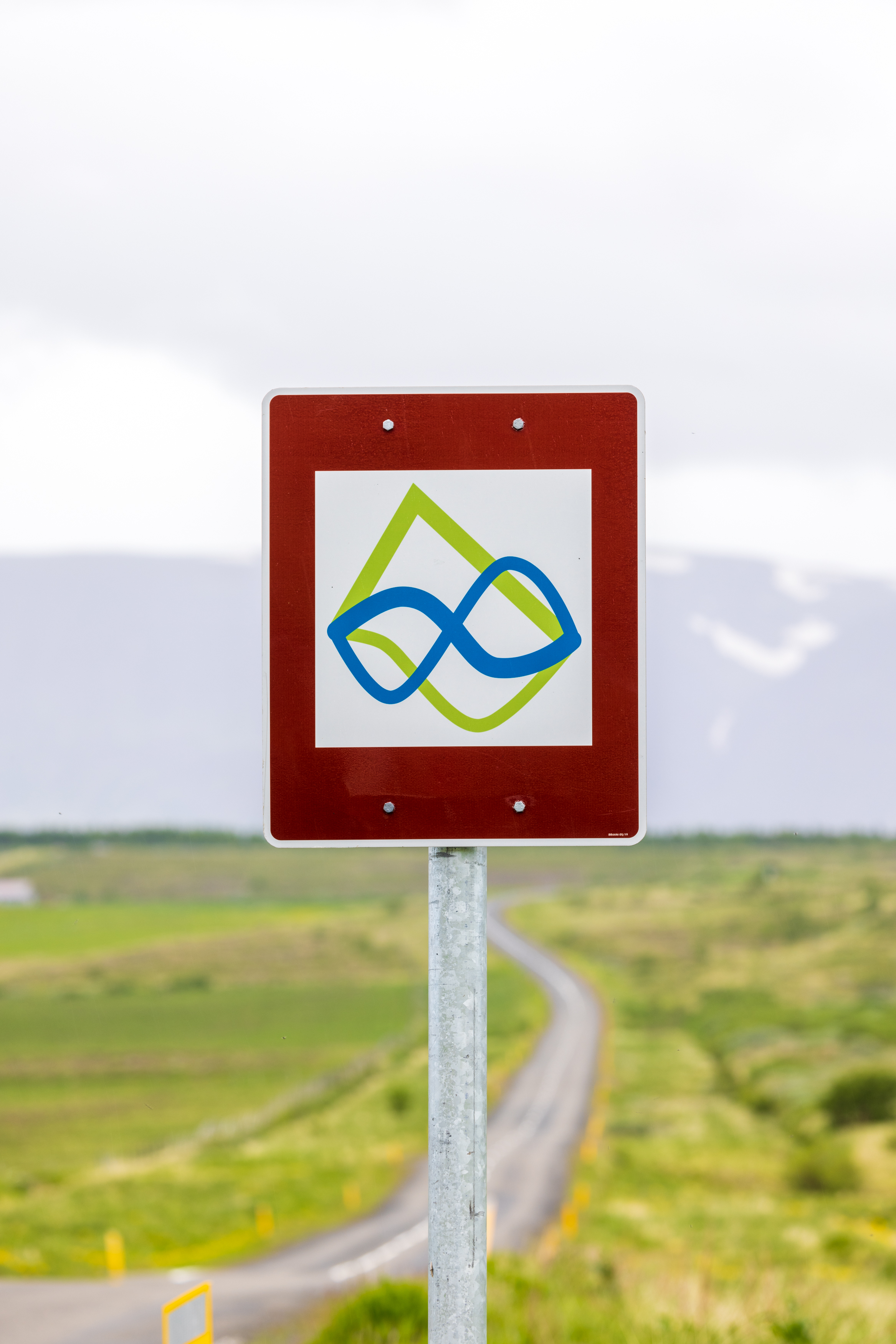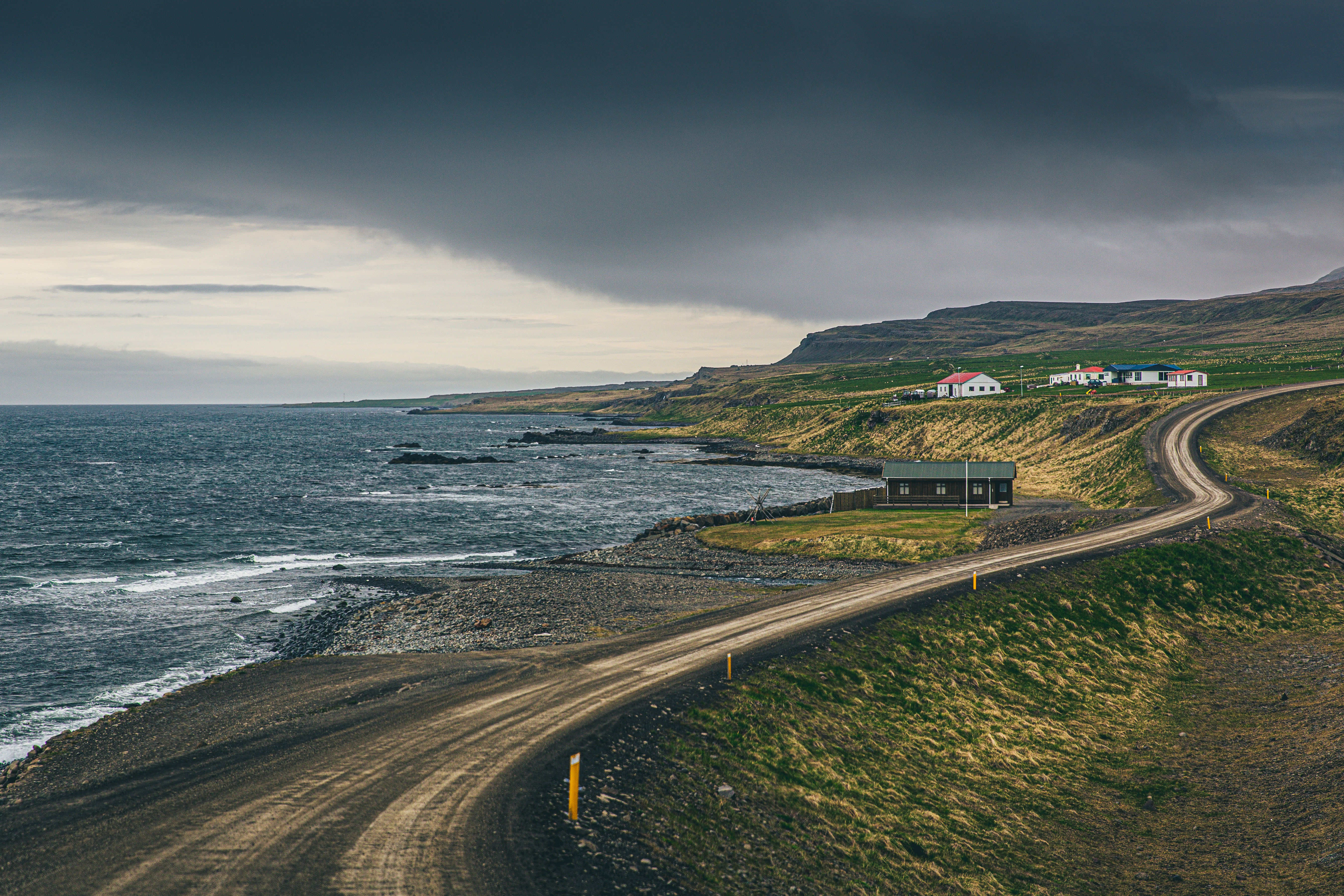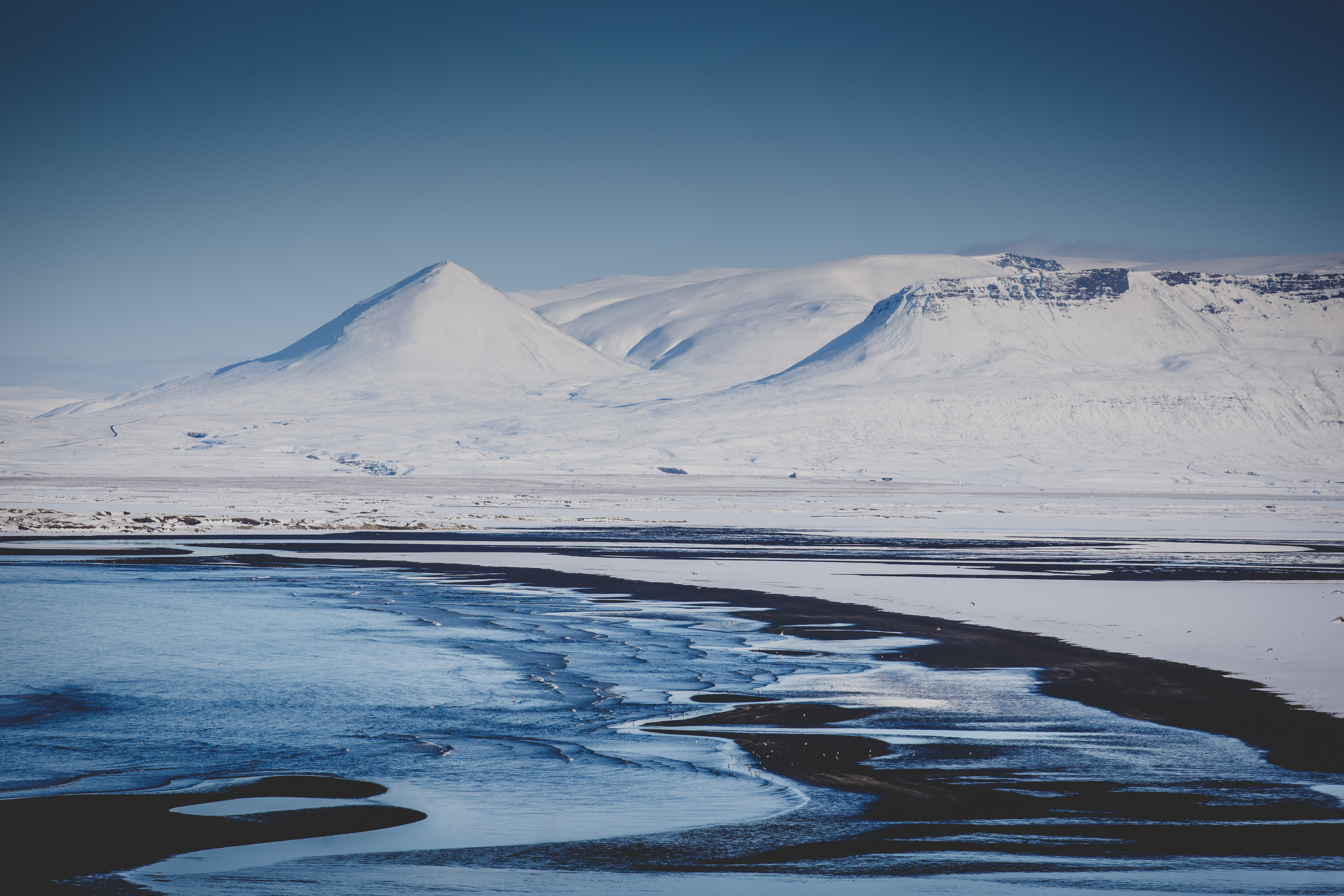Driving & Camping
Driving the Arctic Coast Way
Driving the Arctic Coast Way is different from what you might be used to. It is a real off the beaten track route that guides you in beautiful remote landscapes. This does not only mean leaving the crowd behind but going on a tour in the spirit of adventure and exploration.
We recommend taking a 4x4 car. There are many gravel roads along the route and a 4x4 car offers better safety.
Arctic Coast Way Signs on the Route look like this

what does Off the beaten track mean?
- Leave the asphalt roads and drive on gravel roads for several distances (about 1/3 of the entire route.)
- Leave the wide roads and follow narrow roads through remote areas with less infrastructure.
- Drive slowly! Because of gravel, sheep, and birds on the road; give yourself time as the Arctic Coast Way invites to slow down to experience the pure, tranquil landscapes and their magic.
- The landscapes are amazing behind each curve – but be careful to stop at designated areas for photos and check the traffic behind you!
- When you see a blue M-sign on your side of the road – use the meeting point to give space to the opposing and oncoming traffic as the road is too narrow for two cars. Take it easy and use the time to watch the landscapes.
- Please stay on the roads. Leaving the road means off-road driving and is forbidden by law, with considerable fines to those who break them. Help to protect sensitive moss and vegetation.
Winter conditions are very different!
In snowy conditions, several parts of the Arctic Coast Way are with extremely limited access. Please check the map on the front page to see the route for winter time. As the name of the route indicates it is close to the Arctic. Here in the far North snowfall can come between September and May. But be always aware of daily weather and road condition. When you are traveling in winter make sure you have enough time and flexibility as weather conditions can be challenging and snow storms or heavy snowfall can close even the main roads which are usually cleared every day.

Have a Safe Journey
When traveling the Arctic Coast way it‘s important to know the infrastructure and how to get the latest information. To see the latest road conditions, weather, and safety, click here to read more about how to have a safe journey.
Wild nature but no wild camping!
The Arctic Coast Way welcomes its visitors on an unforgettable journey and takes them through an unspoiled natural environment along the coast of North Iceland. Enjoy the feeling of freedom, but please respect nature and be aware that wild camping is forbidden by law in Iceland.
It is now illegal to spend the night in tent trailers, tent campers, caravans, camper vans or similar outside organized campsites or urban areas unless the landowner or rightsholders has given their permission.
All villages along the route do have camping opportunities. All campsites have trash bins and toilets and in most of the villages, you will find recycling places. Just ask the locals where to find them. We appreciate your help to keep nature as untouched as possible.
Where may I camp?
- Along public routes in inhabited areas, you may pitch a traditional camping tent for one night on uncultivated land, provided there is no campsite in the immediate vicinity and the landowner has not restricted or prohibited access, passage or stay within the area by means of signs on gates and walking paths.
- Along public routes in uninhabited areas, you may pitch a traditional camping tent on privately owned land or national land.
- Away from public routes, you may pitch a traditional camping tent, either on privately owned or national land, unless otherwise indicated in special rules which may be applicable to the land area in question.
- Click here for more details on the rules of camping, at the website of the Environmental Agency of Iceland.
When must I get the permission of the landowner or rightsholders?
- If you plan to camp near places of human habitation or farms.
- If you plan to camp for longer than one night.
- If you plan to pitch more than three tents.
- If the land is cultivated.
- If you plan to use tent trailers, tent campers, caravans, camper vans or similar outside organized campsites or urban areas
Please check the information of the Environment Agency of Iceland